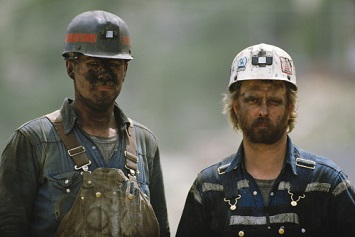The National Institute for Occupational Safety and Health (NIOSH) wants to know why only 35% of active coal miners are participating in NIOSH’s voluntary Coal Workers’ Health Surveillance Program (CWHSP). The CWHSP offers miners free health screenings, including chest X-rays and spirometry examinations, which help detect dust-induced interstitial lung disease (black lung or coal workers’ pneumoconiosis).
“Greater participation in the CWHSP would provide more opportunities for early detection of pneumoconiosis in coal miners, providing those with early disease the ability to take action to reduce the chance for progression to severe lung disease,” states NIOSH.
To better understand the reasons for low participation in the program, NIOSH is seeking answers to 10 questions that cover issues such as awareness that the program exists, whether miners have the time to participate, whether miners are discouraged by others from participating, and whether recognition that disease is present may undermine a miner’s career.
Smaller Mines, More Disease
There is no argument about the need for more screening. Since 1970, when NIOSH began administering the program under the Coal Mine Health and Safety Act, the prevalence of radiographic evidence of pneumoconiosis among participating coal miners reached its lowest level in the late 1990s, but it has steadily increased since 2000 and is now at a 25-year high. In the Appalachian coal mining states of Kentucky, Virginia, and West Virginia, as many as one in five underground coal miners with more than 25 years’ tenure is thought to have radiographic evidence of pneumoconiosis.
Researchers believe several factors have contributed to the increased incidence of disease. For example, mines today are smaller, which appear to be dissuading operators from installing complete dust reduction systems. Also, current mining equipment cuts faster through coal and rock, producing greater amounts of crystalline silica, which is more harmful to the lungs than coal dust and a significant contributor to silicosis, a type of pneumoconiosis.
NIOSH’s questions are directed primarily at coal miners. Others NIOSH hopes will provide answers include miner advocates, unions, industry stakeholders, and healthcare providers.
Mobile Screening Services
NIOSH provides CWHSP mobile surveillance screenings in RVs packed with medical equipment that travel to convenient locations in mining areas. Typically, testing takes about 30 minutes and includes questionnaires, a chest radiograph, a spirometry (breathing) test, and blood pressure screening. Although walk-ins are accepted, miners are urged to call 1-888-480-4042 to schedule an appointment.
The questionnaire has likely been motivated at least in part by bipartisan legislation introduced in August 2018 by U.S. lawmakers from mining states. The bill would have directed NIOSH to submit a report to Congress on ways to boost outreach efforts to increase participation in the CWHSP and to identify barriers that deter miners with black lung from accessing treatment.
NIOSH’s request for information was published in the November 13, 2018, Federal Register.

